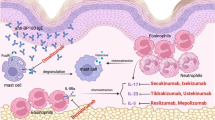Abstract
Rituximab, a chimeric monoclonal antibody specific for human CD20, has recently been used for the treatment of autoimmune diseases. A 14-year-old patient with severe systemic lupus erythematosus (SLE) and class IV glomerulonephritis presented with immunologic and clinical resistance to conventional immunosuppressive therapy for 10 months after diagnosis. To induce remission of active SLE, treatment with 6 monthly rituximab at 375 mg/m2, oral mycophenolate and prednisone was initiated followed by maintenance rituximab every 3 months. The SLEDAI decreased significantly from 31 at diagnosis to 14 after nine applications of rituximab. Extrarenal symptoms of SLE improved significantly. However, after induction therapy with rituximab the patient presented a reversible intrinsic acute renal insufficiency for a period of 3 weeks. The discontinuation of the daily medication (oral prednisone and mycophenolate) by the patient herself may explain the progression of active SLE associated with the reversible acute renal failure. Under intensive immunosuppressive therapy improvement of active disease manifestations and stabilization of plasma creatinine concentrations to normal values was observed. However, proteinuria remained elevated and improved only after a protracted period (median protein-to-creatinine ratio 5.2 g/g, range 0.8–11.2 g/g). Hematuria and urinary cell casts persisted. In conclusion, the extrarenal symptoms of the patient responded particularly well to rituximab. However, despite complete B-cell elimination, renal remission of SLE was not achieved. Thus, it may be possible that humoral and cellular immune mechanisms have a fundamental involvement in the pathogenesis of SLE nephritis.

Similar content being viewed by others
References
Niaudet P (2000) Treatment of lupus nephritis in children. Pediatr Nephrol 14:158–166
Houssiau FA, Vasconcelos C, D’Cruz D, Sebastiani GD, Garrido Ed Ede R, Danieli MG, Abramovicz D, Blockmans D, Mathieu A, Direskeneli H, Galeazzi M, Gul A, Levy Y, Petera P, Popovic R, Petrovic R, Sinico RA, Cattaneo R, Font J, Depresseux G, Cosyns JP, Cervera R (2000) Immunosuppressive therapy in lupus nephritis: the Euro-Lupus Nephritis Trial, a randomized trial of low-dose versus high-dose intravenous cyclophosphamide. Arthritis Rheum 46:2121–2131
Lehman TJ (2001) Modern treatment of childhood SLE. Clin Exp Rheumatol 19:487–489
Strashenko P, Nadler LM, Hardy R, Schlossman SF (1980) Characterization of a human B lymphocyte-specific antigen. J Immunol 125:1678–1685
Reff ME, Carner K, Chambers KS, Chinn PC, Leonard JE, Raab R, Newman RA, Hanna N, Anderson DR (1994) Depletion of B cells in vivo by a chimeric mouse human monoclonal antibody to CD20. Blood 83:435–445
Eisenberg R (2003) SLE—rituximab in lupus. Arthritis Res Ther 5:157–159
Leandro MJ, Edwards JC, Cambridge G, Ehrenstein MR, Isenberg DA (2002) An open study of B lymphocyte depletion in systemic lupus erythematosus. Arthritis Rheum 46:2673–2677
Looney RJ, Anolik JH, Campbell D, Felgar RE, Young F, Arend LJ, Sloand JA, Rosenblatt J, Sanz I (2004) B cell depletion as a novel treatment for systemic lupus erythematosus: a phase I/II dose-escalation trial of rituximab. Arthritis Rheum 50:2580–2589
Chan OT, Madaio MP, Shlomchik MJ (1999) The central and multiple roles of B cells in lupus pathogenesis. Immunol Rev 169:107–121
Zonana-Nacach A, Barr SG, Magder LS, Petri M (2000) Damage in systemic lupus erythematosus and its association with corticosteroids. Arthritis Rheum 43:1801–1808
D’Cruz D, Cuadrado MJ, Mujic F, Tungekar MF, Taub N, Lloyd M, Khamashta MA, Hughes GR (1997) Immunosuppressive therapy in lupus nephritis. Clin Exp Rheumatol 15:275–282
Hoffman RW (2004) T cells in the pathogenesis of systemic lupus erythematosus. Clin Immunol 113:4–13
Anand A, Dean GS, Quereshi K, Isenberg DA, Lydyard PM (2002) Characterization of CD3+ CD4− CD8− (double negative) T cells in patients with systemic lupus erythematosus: activation markers. Lupus 11:493–500
Acknowledgements
We wish to thank Univ. Prof. Dr. Mihatsch Michael, Institute of Pathology, University of Basel, for helpful discussions and examination of the renal biopsy.
Author information
Authors and Affiliations
Corresponding author
Rights and permissions
About this article
Cite this article
Edelbauer, M., Jungraithmayr, T. & Zimmerhackl, L.B. Rituximab in childhood systemic lupus erythematosus refractory to conventional immunosuppression. Pediatr Nephrol 20, 811–813 (2005). https://doi.org/10.1007/s00467-004-1760-1
Received:
Revised:
Accepted:
Published:
Issue Date:
DOI: https://doi.org/10.1007/s00467-004-1760-1




